Duolingo : comment ils ont réussi leur produit et sont devenus l'application éducative #1
Produits iconiques épisode 008

Chaque matin, avant de me rendre à Salesflare, je me douche, je m'habille, je fais mes cours quotidiens de Duolingo, je prends mon petit-déjeuner et je promène le chien.
Oui, Duolingo fait partie de ma routine quotidienne. Et c'est le cas pour (probablement environ 10 à 20) millions d'autres utilisateurs actifs quotidiens.
C'est un exploit très impressionnant pour une application. Surtout s'il s'agit d'une application destinée à l'apprentissage d'une langue étrangère. Ça n'a pas l'air très excitant, non ? 😏
Duolingo rend en fait l'apprentissage des langues amusant, et peut-être même légèrement addictif. 😬
Est-ce possible ? Comment cela est-il possible ?
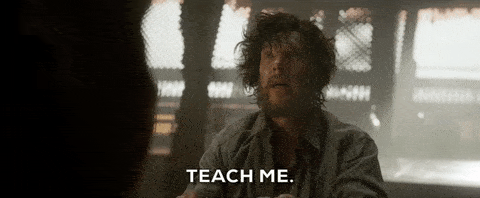
Nous aborderons le comment après avoir exploré le pourquoi. 👇
La mission de Duolingo : rendre l'enseignement des langues personnalisé, amusant et accessible à tous.
Face aux inégalités de l'enseignement traditionnel, notamment dans sa ville natale du Guatemala, le cofondateur de Duolingo, Luis von Ahn, a senti que quelque chose devait changer. 🧐
Il s'est rendu compte que, notamment dans les pays pauvres, l'éducation était défaillante. Les gens qui ont de l'argent peuvent bénéficier d'une éducation de haut niveau, tandis que les gens qui n'ont pas d'argent savent à peine lire et écrire. Et de ce fait, ne gagnent pas d'argent. Un cercle vicieux. 😔
Luis a constaté qu'il existait des logiciels d'apprentissage des langues, comme Rosetta Stone, mais que leur prix était prohibitif et qu'ils ne contribuaient donc pas à combler le fossé éducatif.
C'est alors que Duolingo est né, promettant l'apprentissage gratuit des langues à tout le monde. Accessible à tous ceux qui veulent apprendre. ✨

Sur la base de sa mission, Duolingo attire depuis lors des utilisateurs, des employés et des investisseurs.
Bien sûr, pour survivre, Duolingo a dû faire de l'argent d'une manière ou d'une autre. Ils ont choisi de le faire en se basant sur les publicités, les abonnements mensuels qui suppriment les publicités, les achats in-app et le test d'anglais de Duolingo.
Et en plus de le rendre universellement accessible, ils se sont également attachés à rendre l'apprentissage personnalisé et amusant. 😍
Ils pensaient que les logiciels étaient parfaitement adaptés pour offrir une expérience personnalisée à chaque apprenant de langue.
Et que l'apprentissage des langues devrait être moins ennuyeux et ressembler davantage à un fun jeu. Qui voudrait revenir sur une application d'apprentissage des langues sinon ? 😉
Une organisation de produits, axée sur la conception et les données
Universellement accessible, personnalisé et amusant. Ça sonne bien. 👍
Comment y parvenir ?
La stratégie de Duolingo consiste à améliorer sans relâche la conception de ses produits pour inciter le boncomportement de l'utilisateur sur la base de données. 👈
Et ils le pensent. Plus des trois quarts de l'équipe de Duolingo travaillent dans les domaines de l'ingénierie, de la conception, du produit ou de la recherche.

Le contraste est saisissant avec l'autre grand acteur du secteur des logiciels d'apprentissage des langues : Rosetta Stone. Seul un peu plus d'un quart de son équipe travaille dans ces mêmes départements (sur la base des données LinkedIn Premium).
C'est la bataille classique : l'organisation du produit contre l'organisation marketing-vente.
Et si l'on étudie la croissance de Rosetta Stone par rapport à celle de Duolingo, la stratégie produit de Duolingo s'avère supérieure. 💪
Selon Google, ils suscitent plus d'intérêt dans les recherches.

Et développent leur entreprise à un rythme beaucoup plus élevé, selon LinkedIn.
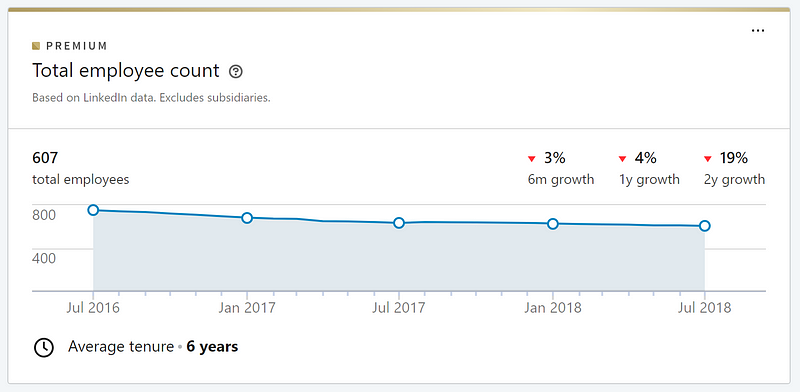
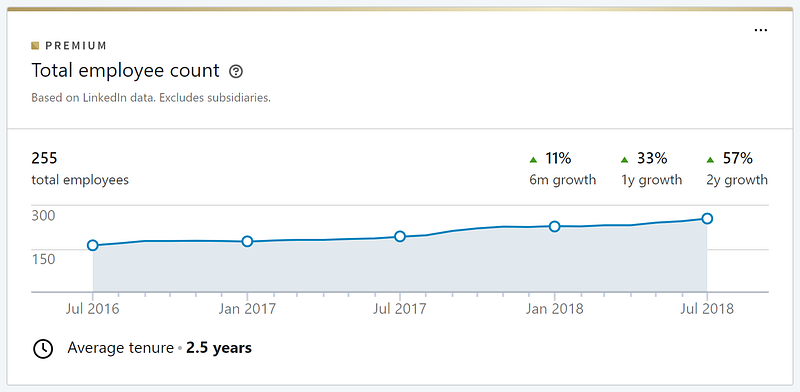
Mathématicien et informaticien, le cofondateur de Duolingo, Luis von Ahn, n'a pas toujours cru au pouvoir de la conception de produits.
Mais aujourd'hui, lorsqu'on lui demande quel est le livre qui a le plus changé sa vie, il répond que c'est "The Design of Everyday Things" de Don Norman. Depuis qu'il a lu ce livre, il est obsédé par la façon dont les produits sont conçus.
En tant qu'équipe dirigée par des scientifiques, Duolingo ne se contente pas d'améliorer la conception sur la base de sentiments personnels. Elle utilise les données comme étoile directrice. 🌟
Trois objectifs, trois équipes Duolingo : apprentissage, croissance et monétisation
Pour Duolingo, le droit comportement de l'utilisateur signifie :
- Apprentissageles gens réussissent mieux à apprendre
- Croissance: un plus grand nombre de personnes apprennent
- Monétisation: davantage de revenus sont générés pour soutenir sa cause
C'est pourquoi Duolingo a décidé de créer trois équipes pour travailler sur ces trois objectifs : une équipe d'apprentissage, une équipe de croissance et une équipe de monétisation. 💡
Chaque équipe est chargée d'améliorer les métriques liées à son objectif spécifique en organisant des expériences de produits.
5 Expériences de Duolingo en matière de produits
La page d'accueil de Duolingo donne déjà une bonne idée de la façon dont son produit est conçu pour inciter l'utilisateur à adopter le bon comportement.

Le fait que le logiciel n'utilise même plus les "cœurs" et ne mentionne pas les badges ou son coach in-app "Duo", est un exemple clair de la rapidité et de la fréquence avec lesquelles Duolingo mène des expériences pour améliorer le produit.
Voici 5 expériences notables et l'impact concret qu'elles ont eu. 👇
1/ Inscription retardée
L'équipe de Duolingo a découvert qu'en permettant aux utilisateurs de s'inscrire plus tard et d'expérimenter d'abord quelques leçons de Duolingo, elle pouvait augmenter le nombre d'utilisateurs actifs quotidiens de 20%. 💥
Sur la base de ces expériences, l'équipe a introduit les "soft walls". Il s'agit de pages facultatives qui demandent aux internautes de s'inscrire, mais qui leur permettent de cliquer sur "Plus tard".
Enfin, après une série de leçons, il y a un "hard wall" qui exige que les utilisateurs s'inscrivent. L'équipe a constaté que les performances de ce mur étaient également améliorées par la présence des "murs souples", car les utilisateurs étaient déjà prêts à s'inscrire.
Lors de l'introduction des "murs souples", Duolingo a commis une erreur qu'elle a dû corriger par la suite : l'équipe a créé un gros bouton rouge "Abandonner ma progression". L'équipe a découvert plus tard que ce bouton invitait en fait les gens à cliquer dessus au lieu de les en dissuader. En le remplaçant ensuite par un bouton gris plus subtil "Plus tard", les performances ont grimpé en flèche.
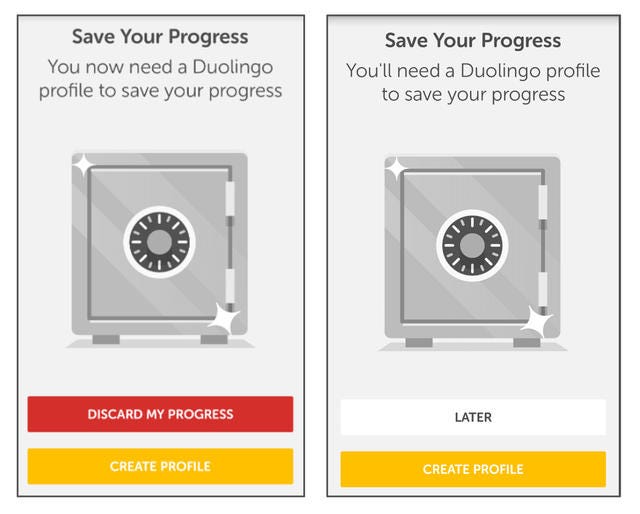
L'équipe a pu améliorer le nombre d'utilisateurs actifs quotidiens de 8,2% supplémentaires grâce à ces expériences ultérieures. Un chiffre extrêmement significatif. 😲
2/ Trait
Un autre aspect important du produit sur lequel l'équipe de Duolingo a beaucoup expérimenté est le concept de "streak", qu'elle a emprunté à l'industrie du jeu.
En d'autres termes, si un utilisateur utilise Duolingo pendant x jours consécutifs, il accumule des points. Les utilisateurs commencent à se sentir investis et essaient de ne pas rompre cette série. Ils récompensent la persistance. 🎁
Je suis personnellement sur une série de 152 jours en ce moment et c'est ma meilleure motivation pour continuer. 💪

Le pouvoir du streak sur la rétention est si fort que l'équipe de Duolingo passe beaucoup de temps à l'optimiser. Il s'agit principalement de rendre plus difficile la perte de l'habitude et de faciliter sa récupération en effectuant quelques exercices.
L'équipe a introduit des "amulettes de week-end", des "réparations de mèches", des "gelées de mèches", ... afin que les gens puissent compenser leurs échecs humains. L'introduction de l'amulette a permis à elle seule d'augmenter de 4% la rétention de 14 jours. ✨
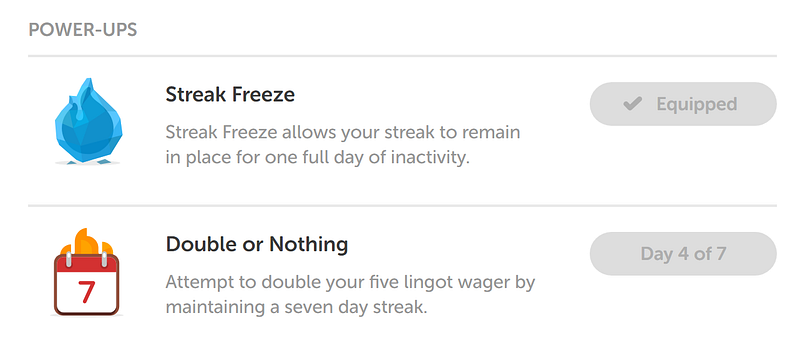
3/ Notifications
En outre, l'équipe a pu améliorer les conversions par rapport aux notifications d'environ 5% simplement en modifiant la copie et en testant différents timings.
L'une des expériences les plus célèbres est cette notification agressive passive : "Bonjour, c'est Duo. Ces rappels ne semblent pas fonctionner. Nous allons cesser de les envoyer pour l'instant."
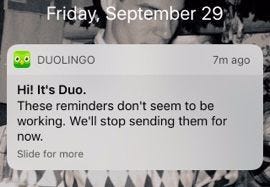
En ce qui concerne le calendrier, l'équipe a constaté que 23,5 heures après la dernière session d'apprentissage était le meilleur moment pour rappeler aux gens de faire leur prochaine session, car les gens apprennent généralement au même moment de la journée.
4/ Badges
L'équipe de Duolingo a ajouté des badges, un aspect classique de la ludification.
Les badges affichent le comportement de l'utilisateur que Duolingo souhaite promouvoir. Cela inclut : dépenser des lingots (la monnaie virtuelle de Duolingo), commencer des paris, maintenir des séries, apprendre pendant les week-ends, être actif dans les clubs de langues intégrés à Duolingo, ...
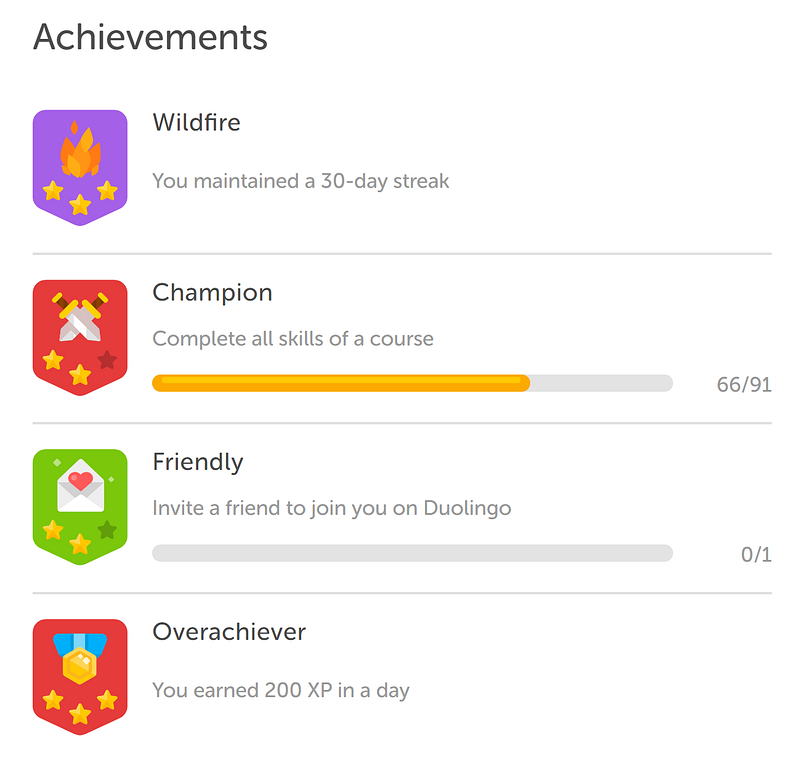
La première version du système de badges en elle-même (même sans les niveaux de badges, c'est-à-dire les étoiles dans la capture d'écran ci-dessus) a déjà augmenté le nombre d'utilisateurs actifs quotidiens de 2,4%.
Mais il a également stimulé un comportement positif très spécifique : il a augmenté les achats dans la boutique Duolingo de 13% et le nombre d'amis ajoutés de 116%.
5/ Coach in-app
L'une des expériences les plus controversées au sein de l'équipe Duolingo a été l'introduction du coach in-app appelé "Duo", la mascotte hibou de soutien. Certains membres de l'équipe l'ont adoré, d'autres l'ont détesté et l'ont trouvé ennuyeux.

Les goûts personnels mis à part, l'étoile qui guide les données a toujours raison. 🌟
L'introduction de Duo a amélioré la rétention à 14 jours de 7,2%. Un succès presque aussi grand que celui des badges. 🚀
Duolingo continue d'aligner les expérimentations de produits
Duolingo a compris qu'arrêter son processus d'amélioration signifiait rester immobile. Et l'immobilisme est synonyme d'échec.
D'autre part, il existe une quantité infinie d'expériences sur les produits que l'on peut réaliser et lancer des expériences sans réfléchir peut s'avérer être une perte de temps totale.
C'est pourquoi l'équipe de Duolingo suit de près toutes les expérimentations de produits possibles, les classe par ordre de priorité et les planifie en conséquence.
Pour garder une traceDuolingo ajoute la liste des expériences à JIRA. (Remarque : utilisez ce qui vous convient. Chez Salesflare, nous utilisons GitHub à la place de JIRA).
Pour prioriser, ils disposent de deux règles simples de hiérarchisation des coûts et des bénéfices :
- Qu'est-ce que la impact potentiel de l'expérience ? L'équipe de Duolingo a même décidé que les expériences dont l'impact est inférieur à 1% ne valent pas la peine.
- Combien de temps cela prendra-t-il ? pour mener les expériences ?
Enfin, lors de la planification, ils choisissent systématiquement de ne pas ignorer les petites expériences au profit des grandes. Ils sont convaincus que c'est la succession d'une énorme quantité de petites améliorations qui conduit à de grands résultats.
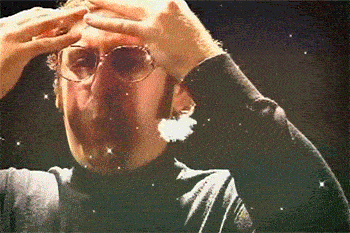
Bravo, Duolingo ! 🙌 Continuez à aller de l'avant dans votre mission géniale.
L'équipe de Salesflare vous aime. 😍
Envie de découvrir d'autres produits emblématiques ? Lisez toute la série ici ! 📲

Nous espérons que cet article vous a plu. Si c'est le cas, passez le mot !
👉 Vous pouvez suivre @salesflare sur Twitter, Facebook et LinkedIn.
Dernière mise à jour :
- 7 Best CRMs for Mac in 2025 - septembre 19, 2025
- 7 Best HubSpot CRM Alternatives in 2025 - 17 septembre 2025
- 7 Best Pipedrive Alternatives in 2025 - septembre 16, 2025